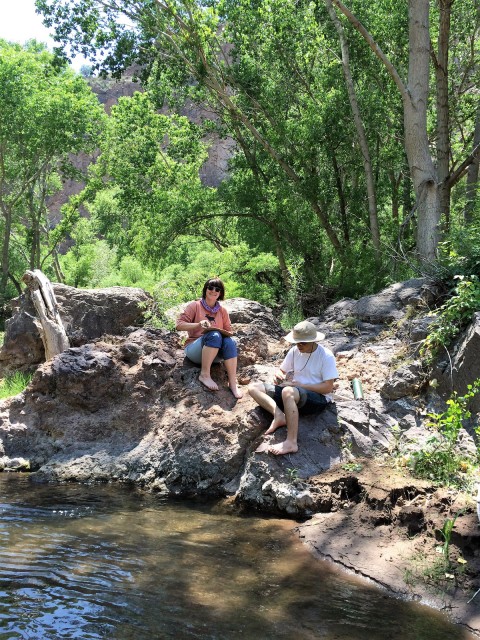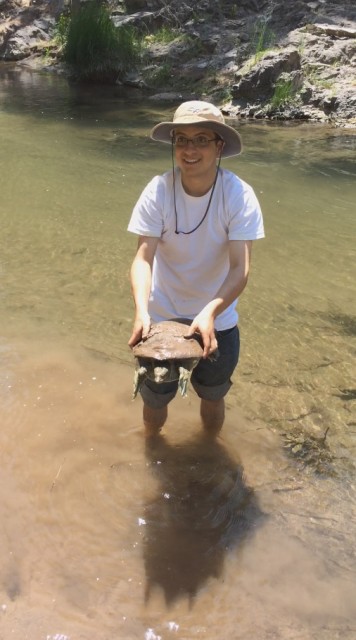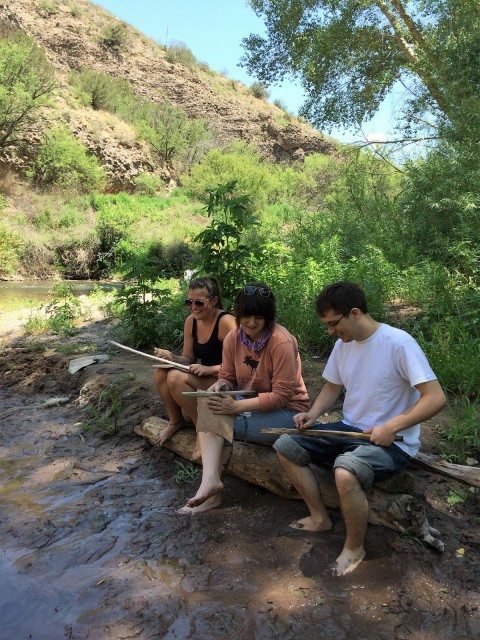- Home
- >
- Preservation Archaeology Blog
- >
- In Appreciation
Patrick Depret-Guillaume, University of Virginia
(June 11, 2016)—Attending field school has given me a renewed appreciation for the skill and ingenuity of humanity’s common ancestors. For millions of years, stone technology underpinned our survival. For centuries considered crude and primitive, anthropologists have now demonstrated these tools to be a sophisticated, living cultural idiom. This summer, I’ve discovered a hidden subculture of experimental archaeologists, traditional craftspeople, and enthusiastic amateurs dedicated to keeping these techniques alive. A few days ago, our staff experimental archaeology instructor, Allen Denoyer, took a group of three students down to the hot springs on the banks of the San Francisco River to introduce us to knapping and atlatl carving. I was on that trip.

Odds are the average American doesn’t spend much time thinking about how to flake a bifacial scraper, much less how to angle the strike of a hammerstone on an obsidian nodule correctly. “Modern man” has become alienated from the skills that brought us our much-vaunted dominion over the earth. Producing stone tools demands focus, practice, and attention to detail. They come in all shapes and sizes: grooved axes, perforators, manos and metates, choppers, dart points; the list is next to endless. Stone tools, despite their simplicity, wed form and function in a seamless, beautiful unity.
That day, I sat by the river, dangling my bare feet in mud warmed by plumes of magma rising from the earth’s mantle deep below. Lofty peaks towered overhead while graceful cottonwoods sheltered us from the sun’s glare. As Allen taught us how to knap obsidian and carve a spear-thrower, I found myself contemplating what has been left behind in humanity’s headlong rush for material “progress.” Granted, I have no desire to return to a time before air conditioning or running water. Two weeks in the field have cured me of that! Properly managed, though, nostalgia is mostly harmless in small doses.
Although only the tangible vestiges of human life are visible through archaeology, the discipline aspires to interpret the past holistically. Like historians, archaeologists study a reality forever lost to the mists of time, no matter how many experimental replica projectile points they make or fourteenth-century artifacts they recover. Even as we students sought to replicate the lifeways of ancient Southwesterners, we found ourselves separated from them by a hopelessly vast temporal and cultural gulf. Listening to birdsong by the banks of the San Francisco, as turtles and fish swam by, it was easy to imagine that we had tapped into something timeless, and that one day we might come to understand them. Sadly, the flow of time is like that of a river; inexorable and inevitable. For me, it is enough to spend the brief period I have been allotted to ponder the mysteries of our shared past, even if it is too distant and complex to be understood in its totality.
Explore the News
-
Join Today
Keep up with the latest discoveries in southwestern archaeology. Join today, and receive Archaeology Southwest Magazine, among other member benefits.

